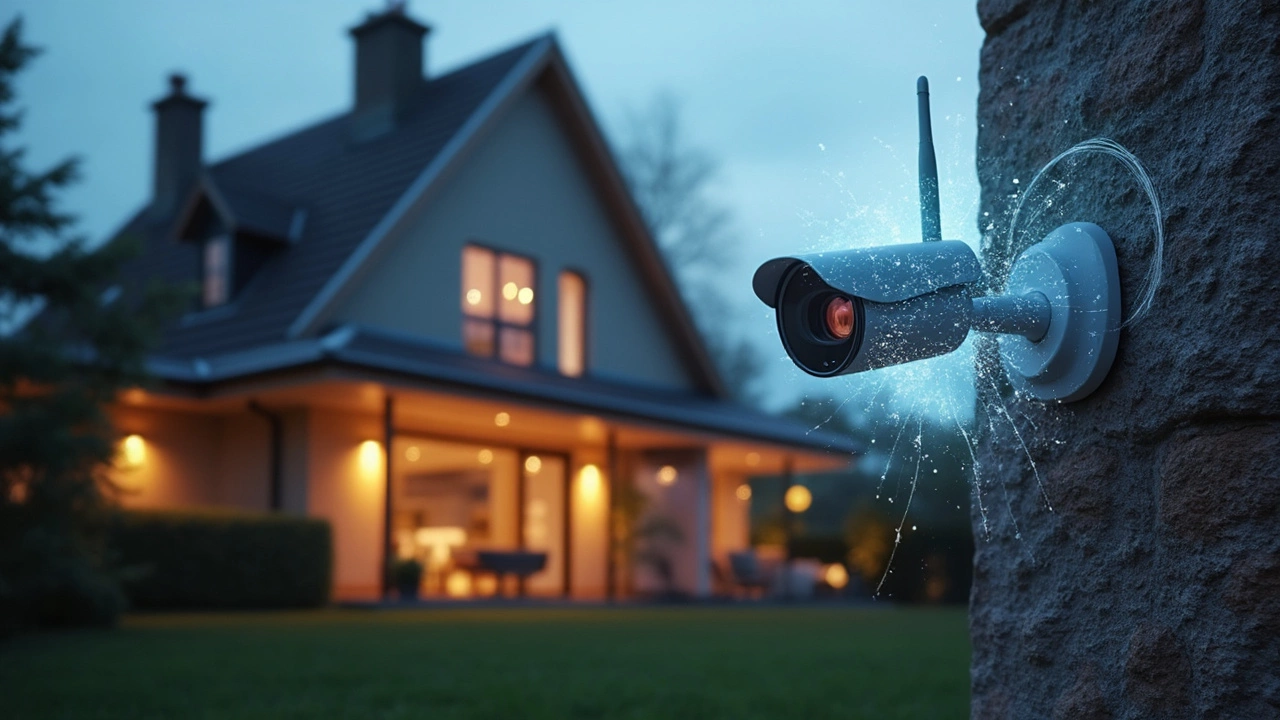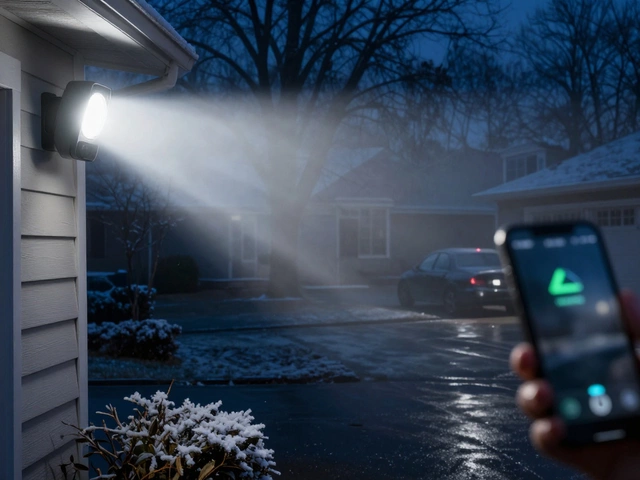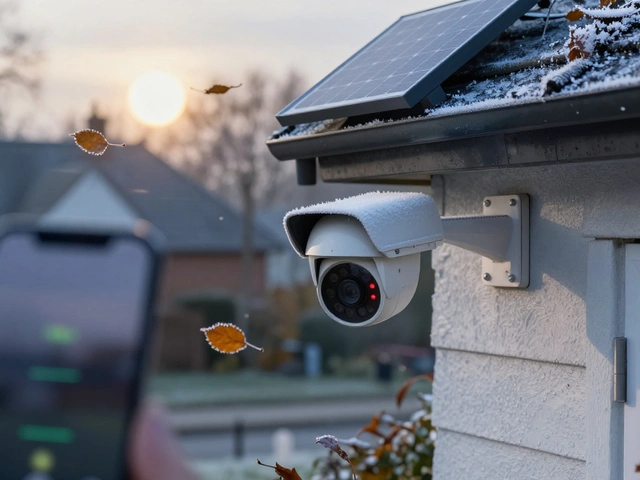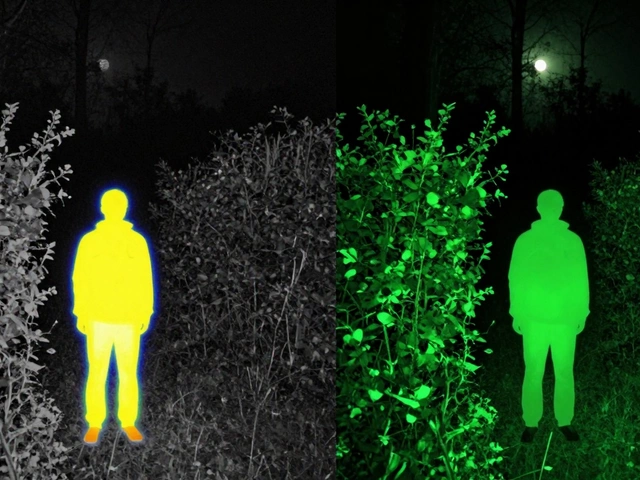Ever wondered if you can keep tabs on your home without relying on WiFi? Odds are you're not alone. With wireless security cameras gaining popularity, it feels like WiFi is the be-all and end-all of setups. But surprise! You actually have options if you're aiming to go WiFi-free.
First things first, let's clear up the basics. Most folks believe that 'wireless' always means 'WiFi-dependent,' but that's not entirely true. Wireless cameras can connect in various ways that don’t involve your standard home network.
Think about local networks or bluetooth setups. These nifty alternatives mean you can still get a live feed without tethering your camera to the internet. Pretty neat, right? Plus, we'll chat about how cellular data can step in when WiFi isn't in the picture—literally!
- Understanding Wireless Cameras
- The Role of WiFi in Camera Setup
- Alternatives to WiFi for Live Feed
- Setting Up with Local Networks
- Using Cellular Networks
- Tips and Tricks for Optimal Setup
Understanding Wireless Cameras
So, you're thinking about getting a wireless security camera but aren't quite sure what you're signing up for? Let's break it down. Wireless cameras, as the name suggests, don't require you to run cables all over the place. They transmit data wirelessly, which usually means through radio frequencies or the internet. While WiFi is a popular means, it’s not the only way.
A lot of folks think wireless equals WiFi, but that's not exactly right. Wireless cameras can use other communication methods like Bluetooth or even cellular networks. The key advantage here is flexibility; you can place these cameras pretty much anywhere without worrying about drilling holes for cables. Plus, it adds a layer of convenience that wired cameras can't match.
Next up, there’s the question of power. Many wireless cameras still require a power cord, although battery-powered options are becoming more common, especially for those spots that are tough to reach with a power outlet. Imagine setting one up in that far-off corner of your backyard without needing to hire an electrician.
One super cool thing about some wireless setups is the ability for them to work over local networks. This means they can talk to your phone or computer directly without needing the internet at all. Great for when you want to keep your data off the cloud and prefer a more secure setup.
| Type | Connection Method | Power Source |
|---|---|---|
| WiFi-Based | Internet | Plug-in/Battery |
| Bluetooth | Local Network | Battery |
| Cellular | SIM Card | Battery |
So when you’re choosing a camera, think about what matters most: is it flexibility with placement, ease of installation, or maybe keeping your footage off the cloud? Whatever your priority, there’s likely a wireless CCTV setup out there that fits your needs like a glove.
The Role of WiFi in Camera Setup
When it comes to setting up a wireless security camera, WiFi often takes center stage. Why? Well, it's how most of these cameras communicate over distances beyond the immediate vicinity. It’s like the bridge that connects your home security to your phone or computer, letting you peek in from anywhere in the world.
Now, let’s break down why WiFi is usually the go-to for these setups. Firstly, WiFi provides high-speed internet access, which is crucial for transmitting video streams swiftly and without hiccups. With a stable connection, your camera can send real-time footage, ensuring you don’t miss a beat.
But that's not the end of the story. WiFi also helps with remote features like alarms and notifications and lets you access archived footage through cloud storage. So, even if you’re sipping a latte far from home, you still have full access to what’s happening back home.
Still interested in how WiFi impacts your live feed? Many modern cameras come with apps that allow easy setup configurations through WiFi. It's basically plug-and-play: connect the camera to your WiFi network, follow the app prompts, and you're set.
However, it's not all sunshine and roses. Depending on your home’s architecture or router positioning, you might face weak signal areas, leading to spotty connections. Security-wise, having everything online could make you more vulnerable to cyber threats. So always ensure your WiFi is locked down with strong passwords and updates.
| Feature | WiFi Required |
|---|---|
| Live Feed | Yes |
| Remote Access | Yes |
| Cloud Storage | Yes |
| Local Viewing (without WiFi) | No |
All in all, WiFi plays a massive role, but isn’t absolutely crucial for every function. Understanding how to use it optimally will help you make the most of your security setup. And remember, with the right tweaks, you can still have a live feed even when you switch gears from WiFi.
Alternatives to WiFi for Live Feed
Alright, so let's dive into how you can keep your security cameras running smoothly without the WiFi crutch. Believe it or not, there are nifty ways to maintain that live feed that might surprise you. These alternatives are not only practical but sometimes even more reliable than WiFi itself.
One popular option is using a local network. If you’ve got a setup where your cameras and devices can connect directly to a local router or hub, you're in business. This local connection keeps everything within your private network, reducing those pesky risks of interference or hacking. Plus, it often results in a smoother feed since it's less dependent on fluctuating internet speeds.
Then there's the cool option of Bluetooth connectivity. Some cameras are built with Bluetooth capabilities, allowing for direct pairing with your watching device. It's like having a walkie-talkie for your home security. The main thing here is to ensure your camera and viewing device are within range to maintain a steady stream.
And don't forget about cellular networks. This is where things get interesting. Some cameras come with built-in SIM card slots, allowing them to use cellular data. It's especially handy for remote areas where WiFi might be nonexistent. Sure, it can come with additional data costs, but the security payoff can be worth it.
Here's a little snapshot so you can weigh the options:
| Connection Method | Pros | Cons |
|---|---|---|
| Local Network | Secure, reliable connection | Limited range |
| Bluetooth | Direct device connection | Short range, requires pairing |
| Cellular Network | Great for remote areas | Data costs, signal dependent |
There you have it. These alternatives make it possible to have a live feed without being tethered to WiFi. So even if the internet is on the fritz, your security doesn't have to be.

Setting Up with Local Networks
Alright, so let's dive into how you can use a wireless security camera without the usual WiFi connection and still get the live feed. Crazy, right? Well, it's totally doable by setting up a local network. This sort of setup lets your camera connect directly with your device, like a phone or a tablet, without needing to connect to your home internet.
First, you’ll want to check if your camera supports a local network feature. Many modern wireless cameras have this built in. Cameras from brands like Arlo or Reolink often come with a setup mode that creates its own direct network.
Once you know your camera supports it, you’ll need to:
- Turn on your camera: Activate the camera, making sure it's fully charged or connected to power.
- Enable local network mode: Each camera model will do this differently, so check your manual. Usually, it involves holding a button or switching a setting in the app.
- Connect your device: On your phone or tablet, go to the WiFi settings. You’ll find a network with the camera’s name. Connect to it.
- Open the app: Use your camera’s app to access the live feed. It might prompt you to enter a password from the camera manual to access the live view.
This process essentially cuts out the middleman – no need for routing through a WiFi connection. It’s faster and more secure if your main concern is getting a live feed straight to your device.
Keep in mind, while this is great for viewing at home or on short range, it doesn’t work if you plan to check in remotely, say, while at the office or traveling. But don’t worry; we’ll cover how to deal with those scenarios soon!
Using Cellular Networks
Thinking of ditching WiFi but still want that wireless security camera running smoothly? Cellular networks might just be your go-to solution. It's like using your camera with a smartphone's data plan. No pesky WiFi needed but a direct line to cellular towers, and voilà, you're back in action.
Here's the scoop: some cameras come with built-in SIM card slots. Pop in a SIM card, just like you do with your phone, and you’re connected. You'll be able to stream a live feed without touching your home WiFi. Handy, huh?
Now, let's be real. While this setup's convenient, there are a few things to consider. First off, data usage. Streaming video eats up data—fast. Keep an eye on your data plan to avoid any unwelcome bills. Typically, you’ll want at least a 1GB monthly plan for standard use, but adjust it based on how much you monitor.
Next up is signal strength. A reliable cellular connection means your camera won’t face hiccups in streaming. Check the coverage map of your provider and make sure your area gets solid signal.
- Select a camera with cellular capabilities.
- Get a SIM card with a suitable data plan.
- Ensure strong cellular coverage in the installation spot.
- Set up alerts for data usage. You don’t want surprises at the end of the month!
Let's take a peek at the cost. Here's a quick comparison to help gauge expenses:
| Option | Monthly Cost |
|---|---|
| 1GB Data Plan | $10 - $20 |
| 5GB Data Plan | $40 - $50 |
Switching to cellular networks isn’t just about cost savings, though. It’s more about versatility and peace of mind, especially if your home’s WiFi is unreliable. By using cellular, you're getting a live feed that'll keep your cameras rolling, wherever WiFi fails. Cool, right?
Tips and Tricks for Optimal Setup
Getting your wireless security camera up and running without WiFi sounds tricky, but it's totally doable when you know a few tricks of the trade. Here’s how to make sure you’re getting the best live feed.
First, consider using a local network. If you're not into using traditional WiFi, a wireless access point or a Bluetooth setup can help you connect your camera to a device directly. Just ensure the camera supports these technologies, and you’ll bypass the need for internet completely.
Another neat trick? Tapping into a cellular network. Cameras like this often come with a SIM card slot. Pop a SIM card in there, and your camera can send live feeds over mobile data. Just double-check your cellular plan to make sure the data usage won’t hit you with a huge bill.
- Strong signal is key: Make sure that any connection, whether it's Bluetooth, local, or cellular, is strong enough in all the places you'd like to set up your cameras. Consider getting a signal booster if needed.
- Power backup: Be prepared for power outages, especially if your area is prone to them. A battery-powered or solar-powered camera ensures uninterrupted functioning.
- Right angle shot: Position your camera at an angle where it covers the maximum area without obstructions. This tip might sound simple, but it’s often overlooked!
- Regular check-ins: Check your camera feed regularly to ensure everything's working smoothly. Sometimes technology has a mind of its own, right?
Finally, make sure all components are weatherproof if you’re planning to set them up outdoors. Mother Nature can be harsh, and you wouldn’t want your equipment to bail out on you because of a rainstorm.
If you’re still on the fence, a trial run for a few days is a great idea. This will give you time to iron out kinks in your setup and make sure your new wireless CCTV setup runs like a charm.






